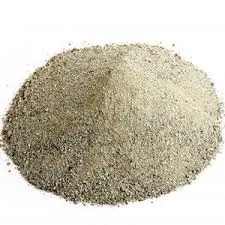
Dek . 17, 2024 05:51 Back to list
china sodium nitrite msds
Safety and Handling of Sodium Nitrite Understanding the Material Safety Data Sheet (MSDS)
Sodium nitrite (NaNO2) is an important chemical compound widely used in various industries, including food preservation, pharmaceuticals, and chemical manufacturing. However, despite its utility, sodium nitrite poses certain hazards that necessitate strict safety measures. This article delves into the critical aspects of sodium nitrite, focusing on the information typically found in its Material Safety Data Sheet (MSDS).
Chemical Properties and Uses
Sodium nitrite appears as a yellowish or white crystalline powder. It is water-soluble and has a slight saline flavor. The primary function of sodium nitrite is as a curing agent in the food industry, particularly for meats, where it helps to inhibit the growth of harmful bacteria such as Clostridium botulinum. Additionally, it serves as a color fixative, providing the characteristic pink color to cured meats. Beyond the food industry, sodium nitrite is utilized in the synthesis of various chemicals and as a reagent in laboratory settings.
Physical and Chemical Hazards
While sodium nitrite serves many essential functions, it is crucial to recognize its associated hazards. According to the MSDS, sodium nitrite is classified as hazardous because it can react violently under certain conditions. It is an oxidizing agent, which means it can cause or enhance combustion in combustible materials. Exposure to strong acids can result in the release of toxic gases, such as nitrogen oxides. Therefore, it is vital to store sodium nitrite in a cool, dry place away from incompatible substances.
Health Hazards
Sodium nitrite can pose significant health risks through various routes of exposure, including inhalation, skin contact, and ingestion. When inhaled, sodium nitrite can irritate the respiratory tract, leading to symptoms such as coughing and shortness of breath. Skin contact may cause irritation, while ingestion can lead to more severe consequences, such as methemoglobinemia—a condition where the blood is unable to effectively carry oxygen. Symptoms of methemoglobinemia can include cyanosis (bluish skin), headache, dizziness, and in severe cases, it can be life-threatening.
china sodium nitrite msds

Given these potential health risks, personal protective equipment (PPE) is crucial when handling sodium nitrite. The MSDS typically recommends wearing appropriate gloves, goggles, and respiratory protection to minimize exposure.
Emergency and First-Aid Measures
The MSDS provides detailed guidance on emergency procedures in case of accidental exposure or spills. In the event of skin contact, the affected area should be washed thoroughly with soap and water, and any contaminated clothing should be removed. If sodium nitrite is inhaled, the individual should be moved to fresh air, and medical attention should be sought if symptoms persist. For ingestion, it is imperative to seek immediate medical assistance, as induced vomiting is not recommended.
Storage and Disposal Recommendations
Proper storage and disposal of sodium nitrite are paramount to ensure safety. The material should be stored in tightly sealed containers labeled with appropriate hazard warnings. This storage facility should be well-ventilated and away from heat sources or direct sunlight.
Disposal of sodium nitrite must comply with local regulations. Generally, it should not be disposed of in regular trash or water systems. Instead, it should be labeled as hazardous waste and disposed of at a certified waste disposal facility.
Conclusion
Sodium nitrite is a valuable compound in various industries, but it comes with significant health and safety risks. Understanding its properties, hazards, and proper handling techniques as outlined in the MSDS is essential for anyone who works with this chemical. By adhering to safety protocols, utilizing personal protective equipment, and following disposal guidelines, the risks associated with sodium nitrite can be effectively managed, ensuring a safe work environment. Always refer to the latest MSDS for sodium nitrite to stay updated on safety information and recommendations.
-
Immunovital Fish Feed Factory | AI-Optimized Nutrition
NewsAug.03,2025
-
Quality Bacillus Coagulans BC30 Factory - Expert Production
NewsAug.02,2025
-
China Salivation AI with GPT-4 Turbo Features
NewsAug.01,2025
-
Epic Sepsis Factories: AI-Driven Detection with GPT-4 Turbo
NewsJul.31,2025
-
Acute Salpingitis and Oophoritis AI Factory
NewsJul.31,2025
-
Premium China Bacillus Subtilis Supplier & Factory Solutions
NewsJul.30,2025




